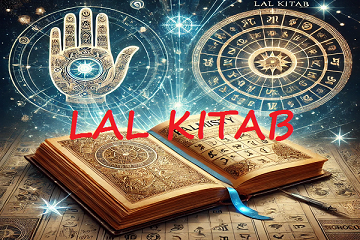Understanding the Unique Philosophy of Lal Kitab

Lal Kitab, often referred to as the "Red Book," is a treasure trove of wisdom that bridges astrology, palmistry, and spirituality. While it shares some common ground with traditional Vedic astrology, its unique philosophy sets it apart as a distinct school of thought. What makes Lal Kitab so fascinating is its focus on karma, its interpretation of planetary influences, and the practical remedies it offers for life's challenges.
The Core Philosophy of Lal Kitab
At the heart of Lal Kitab lies the principle of karma. The text emphasizes the idea that our past actions, whether in this life or a previous one, influence our present and future circumstances. Unlike many other astrological texts, Lal Kitab does not consider destiny as rigid or unchangeable. Instead, it offers hope and practical solutions to overcome obstacles and improve one's life.
Lal Kitab views planetary influences not as mere celestial phenomena but as reflections of human behavior and karmic debts. It encourages individuals to take responsibility for their actions and use remedies to balance their karmic accounts.
Planets as Karmic Influencers
In Lal Kitab, the planets are seen as karmic influencers that shape various aspects of life. Each planet is associated with specific traits, energies, and karmic lessons:
- Sun: Represents authority, vitality, and the soul’s purpose. It governs one’s ego and sense of self.
- Moon: Symbolizes emotions, intuition, and mental well-being. It reflects the mind's fluctuations.
- Mars: Denotes energy, courage, and drive. It influences ambition and the ability to take action.
- Mercury: Associated with communication, intellect, and adaptability. It governs how we connect with others.
- Jupiter: Represents wisdom, prosperity, and spiritual growth. It is the planet of expansion.
- Venus: Governs love, beauty, and creativity. It influences relationships and artistic pursuits.
- Saturn: Symbolizes discipline, responsibility, and karmic lessons. It teaches resilience through challenges.
- Rahu and Ketu: Represent karmic nodes that highlight the shadow aspects of life and spiritual growth opportunities.
Lal Kitab interprets these planetary positions in a person’s birth chart, offering a deeper understanding of their karmic journey and how to align with their higher purpose.
Remedies: A Practical Approach to Karmic Balancing
One of the most distinctive features of Lal Kitab is its focus on practical remedies, known as Upay. These remedies are often simple, cost-effective, and easy to implement, making them accessible to everyone. For example:
- Feeding stray animals to neutralize negative karmic influences of certain planets.
- Offering water to the Sun to strengthen its positive energies and promote vitality.
- Donating items associated with a specific planet to reduce its malefic effects.
- Performing acts of service, such as helping the elderly, to improve Saturn’s influence.
These remedies are not just rituals; they are acts of kindness and self-discipline that encourage individuals to align their actions with positive karmic principles.
The Role of Palmistry in Lal Kitab
Lal Kitab integrates palmistry into its philosophy, adding another layer of insight into an individual’s karmic patterns. The lines on the palm are seen as a reflection of planetary positions and their effects on a person’s life. By analyzing the palm, Lal Kitab practitioners can provide additional guidance on remedies and life adjustments.
This combination of astrology and palmistry is a hallmark of Lal Kitab’s holistic approach, making it a unique and comprehensive guide for self-improvement and spiritual growth.
Conclusion: The Timeless Relevance of Lal Kitab
The philosophy of Lal Kitab is as relevant today as it was when it was first written. In a world filled with challenges and uncertainties, its emphasis on karma, responsibility, and practical remedies offers a beacon of hope and empowerment. By understanding and applying the principles of Lal Kitab, individuals can navigate life with greater clarity, purpose, and resilience.
As we continue to explore the teachings of Lal Kitab, we’ll dive deeper into its remedies, chart interpretations, and the fascinating interplay of karma and planetary influences. Stay tuned for more insights into this mystical Red Book that has captivated the hearts and minds of seekers for generations.

